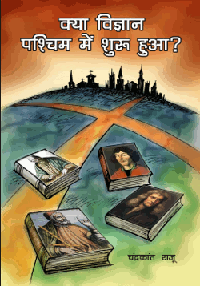Manish said "r" can sound like "l". That is fine. And well knownManishH wrote: 2. Phonetic similarity : rhotacism in Indo-Iranian. The Sanskrit 'r' sound appears like 'l' sound in Greek
3. Palatalization with front vowels: a front vowel like 'e' can influence a velar like 'k' to be articulated near the palate to make it 'ś'
Highly suspect is the assertion that a front vowel like "e" can affect "k" to make is "ś". You see folks, all these explanations are an exercise needed to make up a PIE word in which l and r can be interchanged and where an e can be associated with a k to say that Greeks kept the K, he RigVedadudes converted the e+k into sh.
So kleos allegedly becomes shreos/shravas
equus allegedly becomes ashwas
If you want to convert kleos to sravas, or equus into ashwa this is the way to do it. But I think this is rubbish and will provide a far more credible route of sound change
I can see no way "ek" or "ke" or "kh" can become "sh" or "s". There is no "natural human vocal tendency" to do that. "k" and "s" are so distinct and phono-mechanically separate that human languages have many words with "ks"(k+s) or "sk" (s+k). Skill, school, skull, skanda, ask, axe, akshay, score, accident, accept, kshatriya - the list is endless.
"ks" (k+s) is more difficult to pronounce at the beginning of a word - eg "kshitij", "kshatriya". That is why it might get simplified to "kh" as in "khatri". "ks" (k+s as in Xanadu) can become sanadu or zhanadu. But ka sound will not become sa sound by itself.
But the opposite is possible. sa can become ka. And here is how that can happen via normal vocal mechanisms.
There are many circumstances in which "sa can become "ha". Slurring of speech from intoxication (drunkenness) or a stroke (old age), painful injuries on the tongue, food in the mouth can all convert a "sa" sound into "ha". Put some water in your mouth and say "Saptasindhu" without spraying the water. What you get will be closer to Haptahindu.
If you listen to Tamil or even if you listen carefully to MS Subbalakshmi, you find that on occasion "ha" is pronounced as "ga" or "ka". The sound "ka" comes from the back of the mouth as does "ha" and one can become the other. For example the expression "hack thoo" is an exact description of taking spit from the back of your throat with a "ha" (expulsion of air), then your tongue does a "kh" to catch it an move it forward, The the "th" ejects the spit and "oo" is a forceful exhalation to send the spit flying.
So you can have an evolution of the "sa" sound to "ha" and then "ha" becomes "ka" using the natural motor mechanism in the mouth and voice. But ka cannot evolve into sa by the same natural mechanisms.
Kleos cannot become sravas
Sravas can become Kleos by the route sravas > hravas > hlavas > klavas/kleos
So while I acceet Manish's connection between kleos and sravas. The Sanskrit word can conceivably degenerate to a later Greek form. The Greek form cannot degenerate to the Sanskrit word. If there was a PIE word for "kleos" it could be "sravas" itself.





